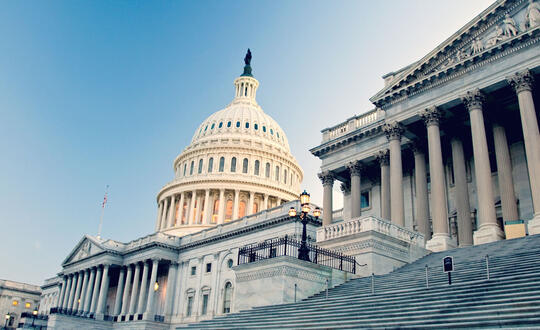Congress Temporarily Raises Subchapter V Debt Limit. Again.
Jun 08 2022
A key temporary bankruptcy related response to the pandemic has been re-implemented and extended with the passage of the Bankruptcy Threshold Adjustment and Technical Corrections Act (the “Act”) which extends the increase in the subchapter V debt limit for eligible businesses to $7.5 million for another two years.
Prior to the pandemic, the Small Business Reorganization Act that created subchapter V contained a maximum debt cutoff for eligibility of $2.7 million. As the COVID-19 pandemic raged, Congress made a significant change to subchapter V in an effort to provide relief to a greater number of businesses, specifically small businesses. As part of the CARES Act passed in 2020, Congress raised the debt limit for subchapter V eligibility from the original $2.7 million to $7.5 million.
The increased debt limit expired in March. However, on April 7 the Senate passed the Act, followed by the House of Representatives on June 7. The Act now awaits President Biden’s signature, confirming the increased subchapter V debt limit until its expiration two years from its enactment.
As the pandemic tapers and interest rates rise, more companies may require the protection of chapter 11 to stave off collection efforts by creditors who become more aggressive as the need to collect overdue loans, back rent, and other outstanding obligations becomes more acute and government assistance programs, including eviction and foreclosure moratoriums, expire. In an effort to address this, Congress passed the bipartisan Act, reestablishing the increased debt limit at $7.5 million for small businesses electing to file for bankruptcy under subchapter V, and also raising the debt limit for individuals filing for bankruptcy protection under chapter 13 to $2.75 million.
The increase of the subchapter V debt limit could have significant ramifications for creditors. Increasing the debt limit means that more small businesses will be able to avail themselves of the more debtor-friendly provisions of subchapter V of chapter 11, including the accelerated timeline of the cases and the ability to avoid the absolute priority rule. These, along with other provisions in subchapter V, greatly reduce creditors’ ability to have a say in the chapter 11 proceedings of small businesses and underscore the importance for creditors to become actively involved as quickly as possible to protect their interests.
Perhaps less significant—but still impactful—is the increase in the debt limit for individuals filing for chapter 13 protection. Like the change to subchapter V, the heightened debt limit under chapter 13 lowers the bar for eligibility. With more debtors fitting in under the new chapter 13 debt limit, there is the potential for fewer individual chapter 11 filings, causing creditors to find themselves increasingly involved in chapter 13 cases.
Bankruptcy filings remained at historically low levels during the pandemic and under application of the CARES Act. Thus, increased eligibility alone is not likely to trigger additional case filings. However, increased eligibility coupled with the expiration of COVID-era subsidies and rising interest rates should have an effect. Whatever the future holds, subchapter V and chapter 13 cases can be expected to comprise a larger share of new filings.